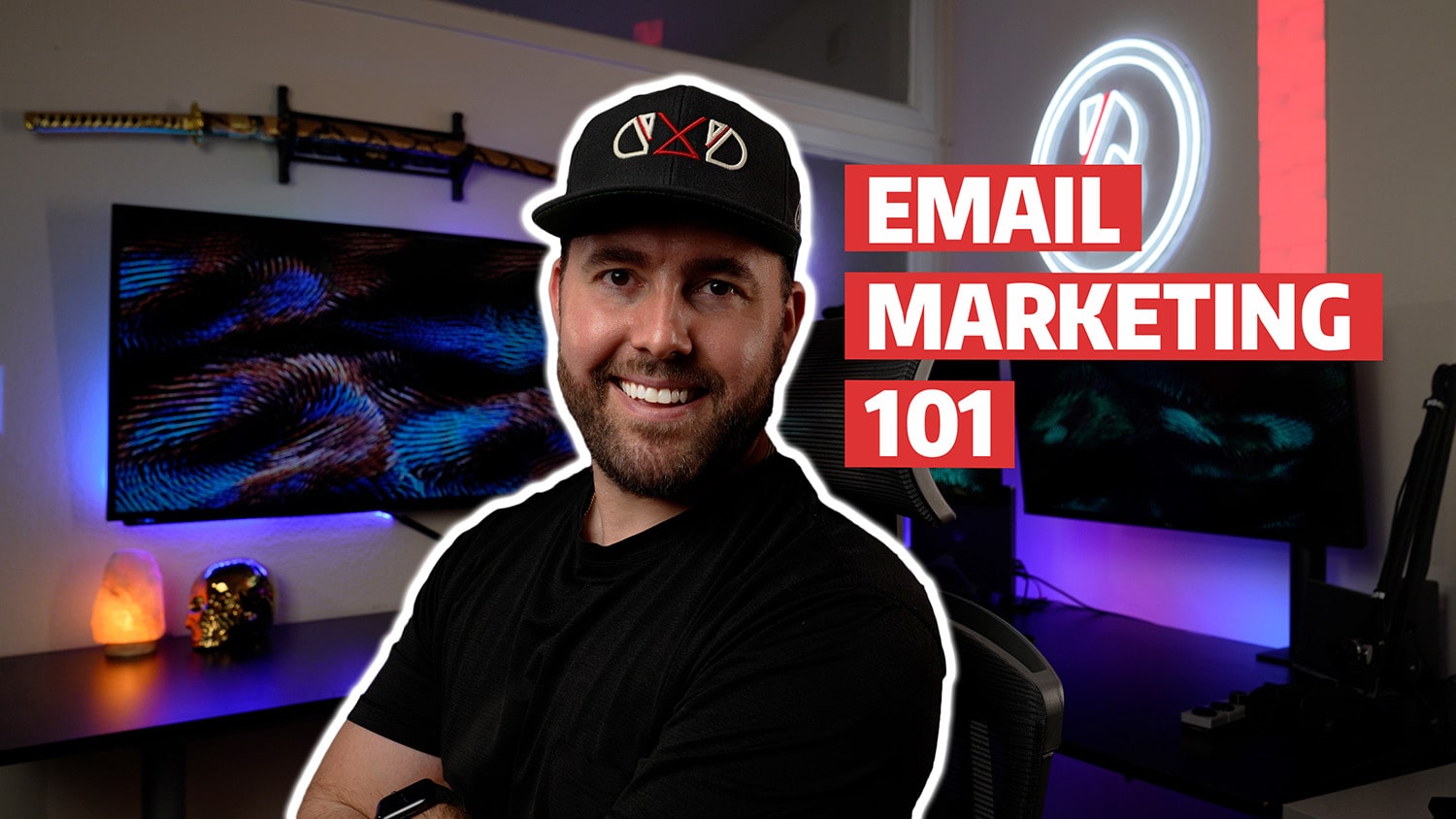Whether you use it in your business or not, you are most likely already familiar with email marketing campaigns. It’s a highly effective digital marketing strategy that sends out emails directly to prospects to convert them into customers.
If you’ve ever signed up on a website for a newsletter to get a discount on their products or to receive free content, then you’ve engaged in email marketing.
If you run a business, you need to use email marketing as part of your strategy.
To learn how to use an effective email marketing campaign to increase your sales and grow your business, continue reading our guide.
What Is Email Marketing & Why Is It Important?
Establish Your Goals
As a business owner, you need to incorporate email marketing into your marketing plan. It can effectively drive conversions and build brand awareness and loyalty.
Before getting started, you have to define your goals.
This will influence the type of campaigns and content you send, your target audience, and how you measure campaign results.
Ask yourself whether any of the following apply…
Do you want to:
- Grow your subscriber list?
- Improve email click-through rates?
- Improve email open rates?
- Retain current customers?
- Reduce unsubscribes?
Once you have established your goals, make sure they align with your company’s general marketing goals and KPIs.
Define Your Audience
When you start collecting email addresses, it makes sense to categorize subscribers into different segments. That way, it’ll be easier for you to choose what type of content to send to which subscribers, thereby directly serving their needs and interests.
When you send content to the right target audience, you increase your click-through rates and improve your chances of achieving your goals (e.g. increasing sales).
Common subscriber segments include:
- Demographics – based on gender and age
- Geographic location – ideal for promoting store-specific content
- Market – useful for sending market, industry, or product-specific content
- Past activity – using past open and click-through behavior for targeted content
- Customer data – ideal for VIP customers or those you are at risk of losing (because they haven’t made a purchase in a certain period of time)
Build Your List
The next step is to build your email list so you can start sending campaigns.
Here are a few ways you can go about it:
Import a List of Existing Contacts
As an established business, you probably already have a list of past and current customers’ email addresses. Simply import that list into your chosen email marketing tool. Before you use these email addresses, make sure you have permission to email them.
Build a New List
To build a new list, start capturing email addresses on your website. You can do that by providing website visitors with a valuable incentive and simple subscription opportunities. Without an incentive, people are unlikely to subscribe to your email list.
Some incentives could be:
- Free Content – Offer visitors to send them your best content for free via email.
- First Order Discount – Extend a discount on their first order if people subscribe.
- Free Shipping – Offer free shipping to customers that sign up with their email.
Aside from offering an incentive, you need to provide easy and convenient subscription opportunities for your website visitors.
Add subscribe boxes in the following places:
- The Header Bar – Putting a form for people to input their email address in exchange for your incentive right at the top of the website cannot be overlooked.
- Slider – This small box appears at the bottom corner of your website.
- Top of Sidebar – Many blogs and websites have a sidebar that can include a call to action encouraging visitors to subscribe to your email list.
- End of Post – At the end of each post, encourage readers to sign up so they never miss out on any upcoming content.
- A Pop-Up – A pop-up can appear at the end of a post or when people scroll through your website. They should only appear once to not seem intrusive and have a strong call to action.
Decide What Type of Email Campaign to Use
Depending on the goals you’ve established, choose one of the following types of email campaign to send:
- Newsletter – One of the most common types, an email newsletter allows you to stay in touch with current and prospective customers. It is regularly sent and informs subscribers about a certain topic of interest and keeps your brand and business fresh in their minds.
- Marketing Offer – If you want to drive sales, you should opt for a marketing offer such as extending a discount on certain products.
- Announcement –To announce a new product, service, or feature, send out an announcement email.
- Event Invitation – Designed to increase attendees, an invitation email encourages people to show up to your event.
Make a Schedule
In the beginning, you may have to try out different days and times to figure out which ones give you the best results.
Until then, you can rely on existing data which, according to research, determines the best and worst days and times to send out email campaigns as:
- Best Day & Time: Thursday – from 9 am to 11 am.
- Worst Day & Time: Saturday – from 4 pm to 5 am.
Create Your Campaign
Once you’ve established your goals, built an email list, and segmented your subscribers, you can start to create your campaign.
Here are a few things you should keep in mind when designing your first campaign:
- Structure Your Email Properly – It’s no secret that people have a very short attention span. They usually scan through content, looking for points of interest. To grab your reader’s attention and increase your click-through rate, make sure to structure your email in a way that makes it easy to read.
- Avoid Long Text-Heavy Paragraphs – Use a concise headline that highlights your campaign’s key message together with only the most necessary information. Add visuals and a strong call to action button at the end that makes it clear for readers what to do next.
- Use Visuals – Your goal should be to use minimal text dotted with engaging visuals, including images and videos. They are more memorable and eye-catching than text and help your content stand out.
- Personalize Your Email – Personalized emails maximize engagement and increase the likelihood of readers responding to your content. Fortunately, it’s easy to personalize an email by adding a reader’s name in the subject line and in the salutation through email marketing automation, segmenting your lists, and using third-party integrations.
Measure Results
To know whether what you are doing is paying off, go ahead and measure your email campaign results. Unsubscribe and email opening rates don’t give you useful insights.
Instead, measure your results in the following ways:
- Check the bounce rate of the landing pages your email campaign is linking to.
- Measure website traffic and figure out what percentage comes from your email marketing campaign.
- Look at the email conversion rate by dividing the number of people who took action by the total number of emails you sent out and multiply that number by 100.
- Track whether your list is growing – If your campaigns are effective, your email list growth rate should remain the same or increase.
- Find out how many recipients forwarded or shared your content.
- Track how many people marked your content as spam.
- Measure your ROI by determining the dollar amount of additional sales made from your email campaign minus the total money you invested in the campaign divided by the total money invested in the campaign x 100.
Final Thoughts
The best way to engage an audience is through an effective email marketing campaign. By following the right steps, including establishing your goals, defining your audience, building your email list, and then creating the right type of campaign for your target market, you increase your chances for success.
Email marketing is effective, doesn’t require significant investments, and is easy to set up on your own. It allows you to directly reach out to your customers and encourage them to take action as no other marketing channel does.
Bottom line: if you don’t yet have one, get started on creating an email campaign to regularly engage and communicate with your past, current and prospective customers.

